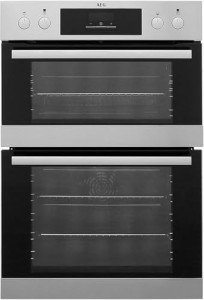10 Apps To Aid You Control Your Intergrated Kitchen
The Integrated Kitchen: Redefining Culinary Spaces
The modern-day kitchen has evolved beyond a mere cooking location; it has actually transformed into a multifunctional area that embodies the modern lifestyle. Among integrated double oven and hob that have emerged to support this advancement is the integrated kitchen. This short article explores the principle of integrated cooking areas, their advantages, style considerations, and frequently asked questions, offering a detailed guide for homeowners and interior decoration lovers alike.
What is an Integrated Kitchen?
An integrated kitchen describes a design technique where the kitchen perfectly mixes with the living spaces of a home. This concept aims to create a cohesive atmosphere where cooking, dining, and socializing can occur without extreme limits. Integrated kitchens often include open designs, minimalist kitchen cabinetry, and modern appliances that contribute to a streamlined aesthetic.
Secret Features of Integrated Kitchens
Integrated kitchens typically share a number of typical characteristics that identify them from standard kitchen layouts:
- Open Layout: Integration of kitchen, dining, and living spaces promotes interaction and fluidity.
- Minimalist Design: Emphasis on tidy lines and simpleness, often with concealed appliances and kitchen cabinetry.
- High-Quality Materials: Use of resilient and aesthetically pleasing materials, such as quartz, stainless steel, and natural woods.
- Smart Technology: Incorporation of wise appliances that boost convenience and performance in cooking and maintenance.
- Multi-functional Elements: Features like kitchen islands that serve as cooking areas, dining areas, and social centers.
Advantages of an Integrated Kitchen
The increase in appeal of integrated kitchen areas can be attributed to a variety of advantages they provide:
Benefit
Description
Enhanced Aesthetics
Integrated kitchens create a tidy and uniform look that boosts the overall appeal of living spaces.
Social Interaction
Open layouts encourage household events and interacting socially while cooking or dining.
Increased Space
Elimination of physical barriers in between spaces provides a more large sensation, which is especially beneficial for smaller sized homes.
Enhanced Functionality
A well-planned integrated kitchen enhances the cooking and amusing procedure by providing easy access to essentials.
Worth Addition
Integrated kitchen areas can boost residential or commercial property worth and bring in prospective buyers, thanks to their modern style and functionality.
Design Considerations for Integrated Kitchens
Developing an integrated kitchen requires thoughtful planning and consideration of numerous style components. Here are some vital aspects to remember:
Layout Planning:
- An open flooring strategy facilitates a smooth circulation between areas.
- Zoning can help specify areas for cooking, dining, and relaxation without blocking motion.
Color Scheme:
- A cohesive color scheme ties together the kitchen with adjacent locations.
- Light colors can make the area appear larger, while darker tones add warmth and depth.
Storage Solutions:
- Utilize clever storage options like pull-out cabinets and integrated shelving to minimize mess.
- Consider utilizing furnishings that supplies additional storage, such as ottomans or coffee tables.
Lighting:
- Adequate and layered lighting is important to create an inviting environment.
- Utilize a mix of job, ambient, and accent lighting to boost functionality and charm.
Picking the Right Appliances:
- Select appliances that fit seamlessly into cabinets to preserve a clean look.
- Energy-efficient alternatives can conserve expenses and contribute to a sustainable kitchen.
A Sample Layout for an Integrated Kitchen
Location
Description
Cooking Zone
Central island with a cooktop and counter space for food preparation.
Eating Area
Surrounding dining table that complements the kitchen aesthetics.
Relaxation Zone
A small seating location or bar stools at the island for casual events.
Storage Solutions
Built-in cabinets and racks that supply sufficient storage without bulkiness.
Transitioning Space
A neutral color scheme that seamlessly transitions into the living-room space.
Often Asked Questions (FAQs)
1. What are the benefits of an integrated kitchen over a traditional kitchen design?
Integrated cooking areas cultivate a more social and fluid environment, frequently providing better space usage and modern aesthetics. They are particularly attractive to families and those who delight in amusing.
2. How can I accomplish a seamless look in my integrated kitchen?
To achieve a seamless look, usage consistent colors, products, and designs throughout the kitchen and adjoining locations. Incorporating cabinets and appliances with the exact same finish helps minimize visual mess.
3. Is an integrated kitchen appropriate for small homes?
Definitely! Integrated cooking areas can maximize area in smaller homes by getting rid of unnecessary walls and creating a more open feel. Using smart storage services and multi-functional furnishings can further improve effectiveness.
4. What designs work best for an integrated kitchen?
Contemporary, modern, and minimalist styles provide themselves well to integrated cooking areas. However, individual choices can lead to unique blends that capture private taste while preserving harmony with the rest of the home.
5. How do I pick the right products for an integrated kitchen?
Select products that are not only aesthetically pleasing however likewise long lasting and easy to keep. Think about elements like wetness resistance for kitchen counter tops and floor covering, as well as the total convenience and appeal of the products used throughout the space.
The integrated kitchen represents a substantial shift in how we view our culinary areas. By combining performance with visual beauty, house owners can enjoy an area that deals with their cooking needs while inviting family and good friends to collect and mingle. As patterns continue to develop, the integrated kitchen will likely stay at the leading edge of home style, making it essential for those seeking to develop both a gorgeous and useful living environment.
